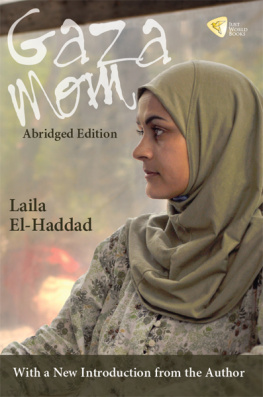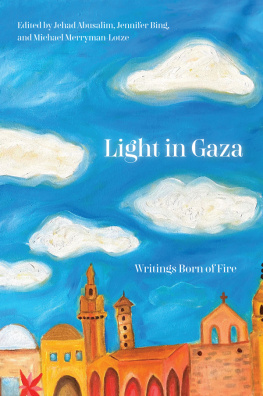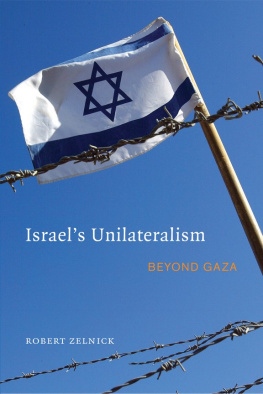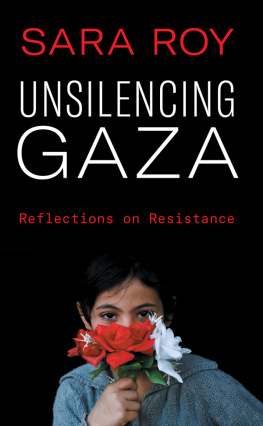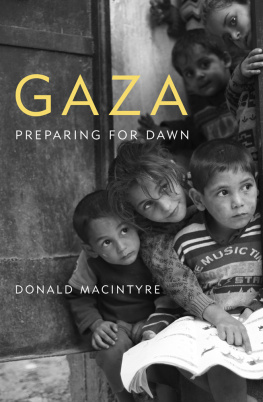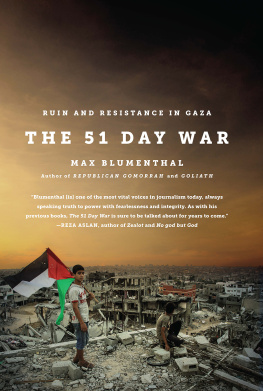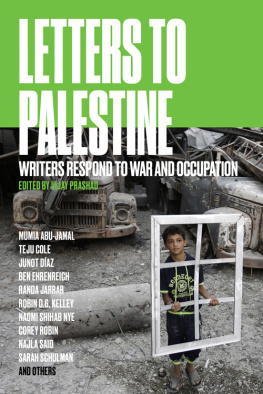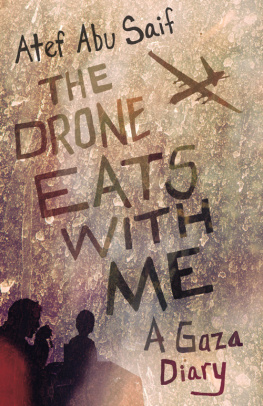TO THOSE FIGHTING FOR LIFE
This book is dedicated to the Palestinian health workers in Gaza. To all the ambulance crews, nurses, doctors, medical students and volunteers who fought to protect the lives of those who fought to save the lives of those who were wounded or unhurt, the living and the dying, often putting their own lives on the line, throughout the fifty-one days of the major Israeli offensive in the summer of 2014.
DO NOT LOSE YOUR WAY
With our choice of profession, we have chosen to take the side of life. This means individual initiative, creative enthusiasm, courage and spontaneity.
Others take the side of death. That implies acting with systematic, calculated deviousness, as well as the repudiation of youth. As doctors, we only have one loyalty, and that is towards the individual patient whom fate has brought to us. If you manage to stick to that thought, you cannot lose your way, not even in the clouded moral landscape of modern life.
Prof. Anton Hauge
From his speech to graduating medical students at the University of Oslo, 1995
Norwegian edition published by Kagge Forlag AS, Oslo
Original Norwegian text 2014 Kagge Forlag AS
English translation 2015 Guy Puzey
English edition published by Skyscraper Publications Limited
Talton Edge, Newbold on Stour, Warwickshire CV37 8TR
www.skyscraperpublications.com
This translation has been published with the financial support of NORLA.
First published 2015
Copyright 2015 Mads Gilbert and Max Blumenthal
Design: Trine + Kim design studio
Photographs by Mads Gilbert unless otherwise specified.
pp. 5657 (image of the boys): Rex/All Over Press;
p. 57 (image of the father): Hosam Salem/Corbis/All Over Press;
p. 71 (image of the mother and daughter): Jon Lundell; pp. 9091: MediaTown.ps;
p. 144: Atib Katib, Getty Images News; p. 169: Hanne Heszlein-Lossius;
pp. 180-181: Bjrn-Owe Holmberg.
The map at the back of the book, Gaza Strip: Access and Movement, is drawn from Wikipedia. The Norwegian publisher has tried to contact the rights holder, but has not succeeded.
English version typeset by Chandler Book Design
Printed by Latitude Press Ltd
ISBN-13: 978-0-9931533-6-5
All rights reserved. This book is sold subject to the condition that it shall not be resold, lent, hired out or otherwise circulated without the express prior consent of the publisher.
CONTENTS
THIS BOOK IS A TESTIMONY, not an academic thesis or a neutral journalistic report.
This book is my account of what I witnessed in Gaza in the summer of 2014. It is the story of some of the human cost paid by the Palestinian people for enduring the Israeli occupation. For almost seventy years, they have been living under an increasingly brutal apartheid regime and constant military attacks. Many older Palestinians still remember what happened in 1948 in the Nakba, the Palestinian catastrophe, when the state of Israel was created on their land. Large parts of the population in what was once Palestine were driven from their homes, towns and villages by armed force and terror. Most of the Palestinians in Gaza are refugees in their own country.
The elderly generation who remember the Nakba say that the attack this summer was worse than 1948.
I have been carrying out medical solidarity work for the Palestinians since 1981. It has become a part of my life and a great source of joy and sorrow, inspiration and disappointment. For the past fifteen years, I have been working in Gaza with the Palestinian health service, making at least one trip a year to teach, organise projects, perform research, learn or carry out actual emergency medical treatment, especially in periods of war. Since 2006, I have witnessed at close hand four attacks by the Israeli military on the population of Gaza. Each time it happens, I feel the anxiety coming over me at home in Norway. I know that I must go. Not because the Palestinians cannot manage their medical treatment by themselves they are highly educated and have extensive experience dealing with medical care in war situations but because of the importance of solidarity. It inspires us and strengthens us in our work, they say. Were not alone when you come.
The medical profession cannot and should not be detached from society; it should be a living force, a tool for living good lives and for making changes that serve justice. Medicine should be a peaceful weapon against oppression and injustice. Of course we have to take sides. We take the patients side against whatever is detrimental to their health. This calls for action, often with political implications.
Life is sacred. Every single human life is irreplaceable, whosever it is: Israeli or Palestinian, Norwegian or Afghan. For the Palestinians, whether they are in Gaza or the West Bank, in Israel or the diaspora, the circumstances of oppression they experience as a people under occupation are, in themselves, detrimental to their health. At the extreme, this might mean starvation caused by the siege, as well as death and trauma caused by the attacks.
I went to Gaza this summer to work at al-Shifa Hospital and show real solidarity. I am fortunate to have a job that can be useful in times of war. Modern weapons are horribly devious, causing terrific damage to the human body. When words alone are not enough, I take pictures, without disturbing our work, in order to be able to tell the peoples story. If I am only securing airways, stopping bleeding, soothing pain and repairing wounds, I feel I am not doing enough. I have to do something about the fundamental injustices and distress experienced by the Palestinians. I want to tell people about the lives of those who are being bombed, life as it is experienced by the Palestinians themselves. I want to show the world the dignity, pride and indomitable, steadfast courage, the sumd that these severely tested people have taught me about.
This book is one way of passing on my experiences of life in Gaza for fifteen days in July 2014. It is the photo story you will not see on television or in the newspapers. With a small, black camera ready in the pocket of my green operating scrubs, and with permission from the hospital management, I was able to take photographs freely, but naturally within accepted ethical limits.
What I experienced was awful, and it was immense. The sounds of bombs and screaming, bodies torn to pieces and a society reduced to rubble; but I also saw camaraderie, dignity, human courage and unflinching resolve.
I had no choice. I had to write.
The story of the Palestinians is best told by the Palestinians themselves. They rarely appear in the mainstream Western news sources, especially not in the United States, where the well-oiled and loudly voiced official Israeli account dominates, leaving no space for telling about the Palestinians suffering or for self-critical analysis, just the usual claims about Palestinian terrorism and Israeli self-defence.
In each of the four Israeli assaults on Gaza over the past eight years, thousands of Palestinian civilians have been maimed or killed, and Palestinian society has been broken ever further apart. During the period from 2007 to today, Gaza has been subjected to a continuous Israeli siege and blockade, all with the full support of the United States, and to barely audible murmurs of opposition from Norway. After the most recent ceasefire in August 2014, Gaza is still behind the same suffocating blockade, on land as in the air and along the coast. No other regimes than the state of Israel would be able to get away with such an outrage without massive international criticism, political sanctions or threats of physical intervention. But Israel is wrapped up in an impenetrable protective blanket. Its political Teflon coating is carefully guarded by the Israeli government and significantly bolstered by the apparently unconditional support of the United States.


